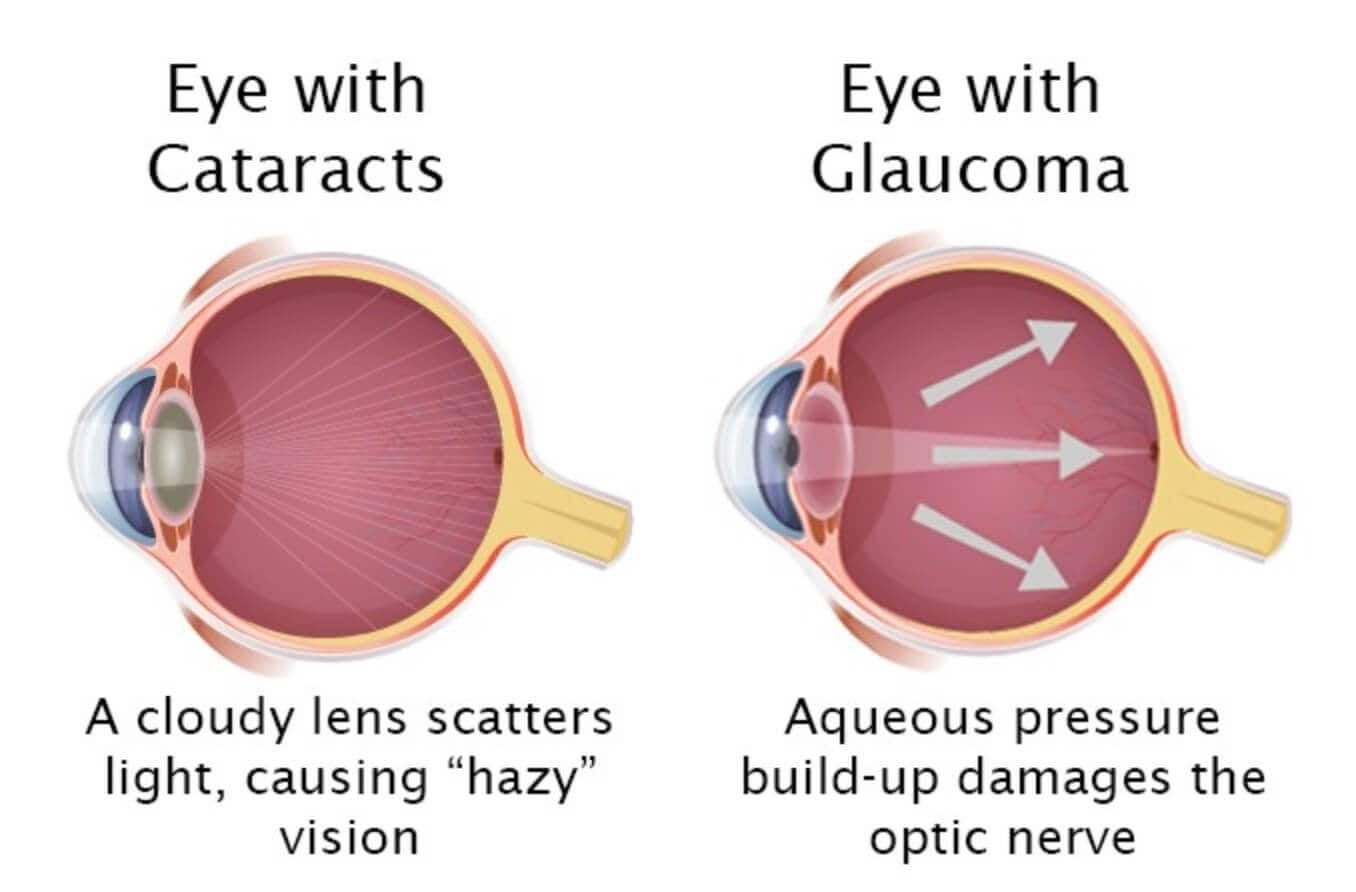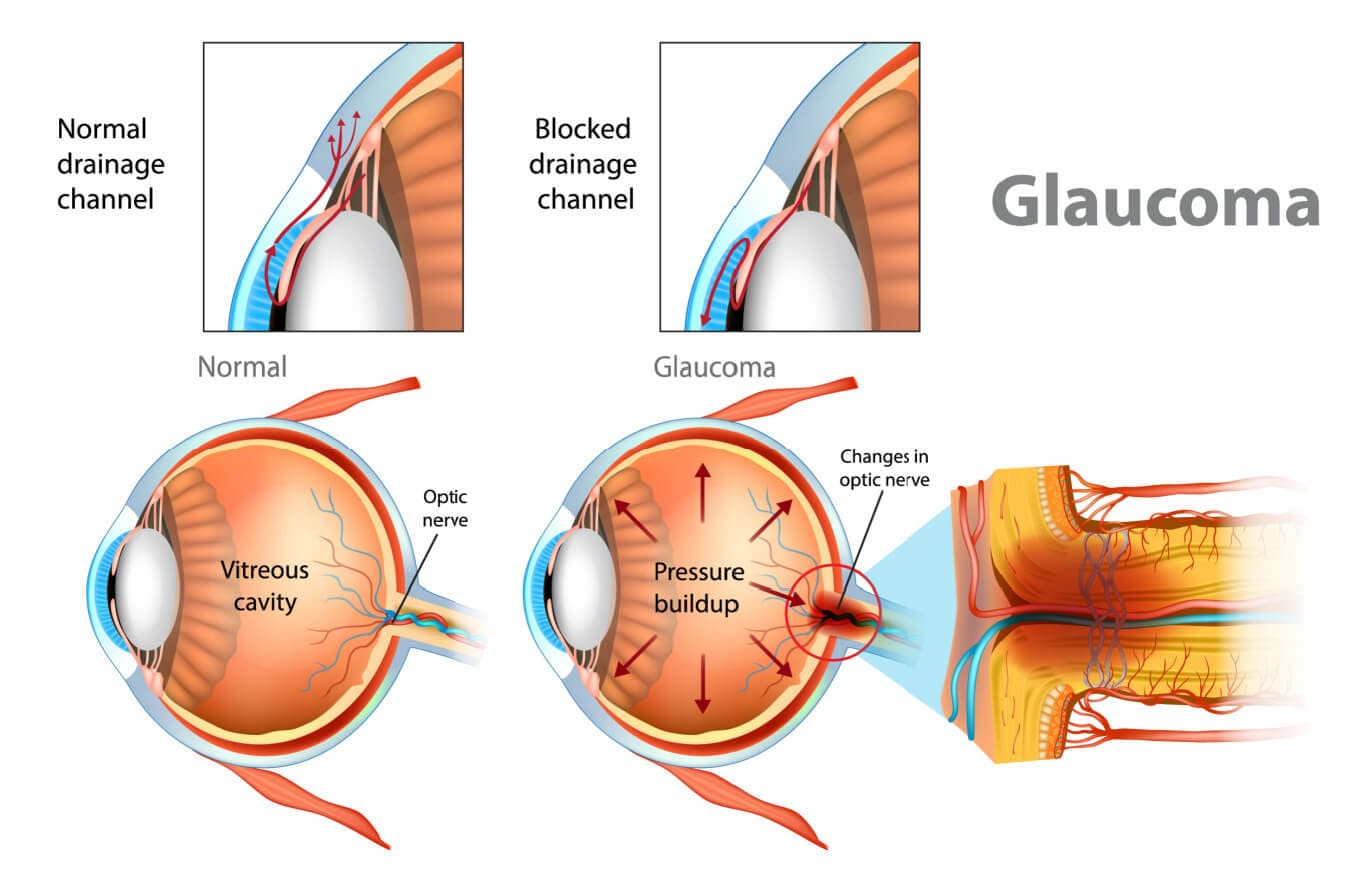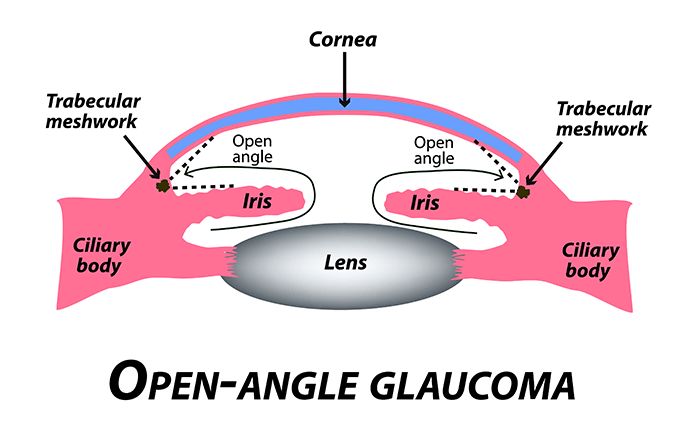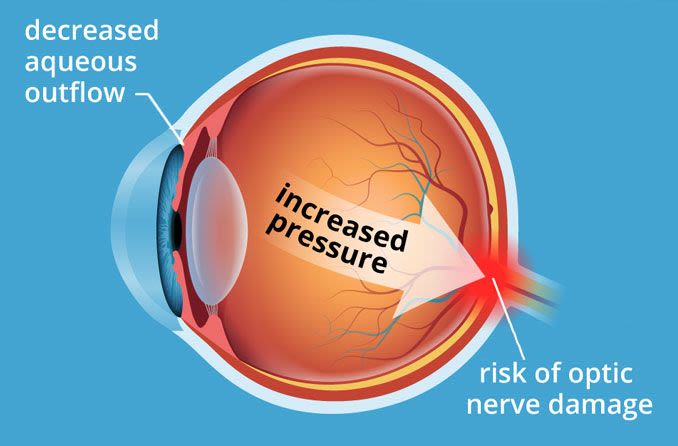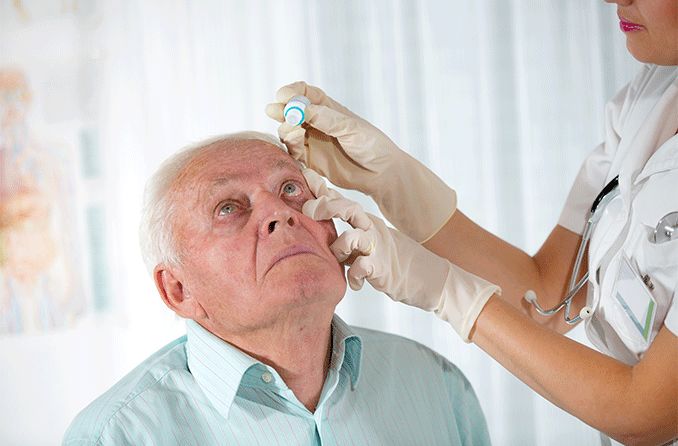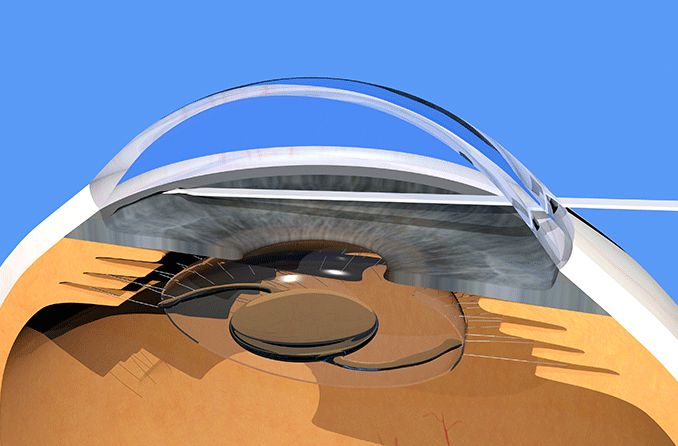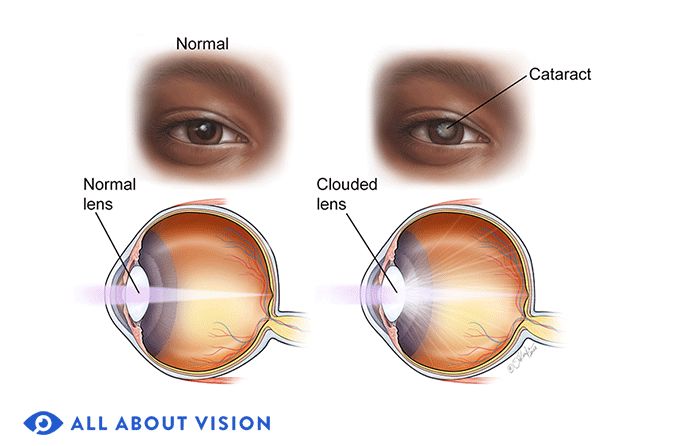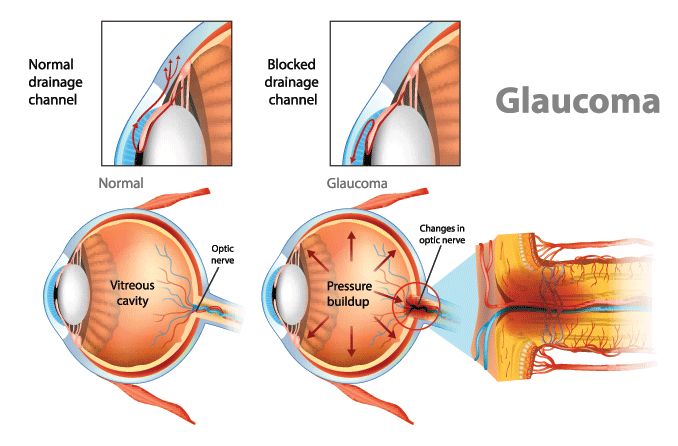How cataracts and glaucoma compare
Glaucoma and cataracts are two different eye conditions that affect the inside of your eye in different ways. They can both lead to vision loss if they aren't managed or treated. Cataracts and glaucoma are the top two leading causes of blindness in the world.
About glaucoma
Glaucoma is damage to the optic nerve in the back of your eye. The optic nerve is the main pathway between your eye and your brain, so the damage can cause permanent vision loss.
Most cases happen when there's too much fluid pressure inside your eye.
There aren't many warning signs you can see with your own eyes. Vision loss is often the first and only symptom.
But if an eye doctor catches high eye pressure early, you can manage it and help preserve the eyesight you have.
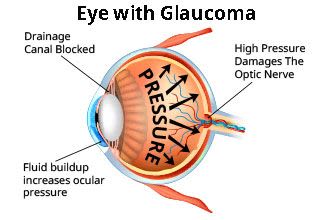
Some different types of glaucoma are:
Open-angle – The most common type. It usually progresses over a long period of time.
Angle-closure – A severe form that comes on quickly. It's a medical emergency.
Normal-tension – Damage that happens with normal eye pressure.
Congenital – When someone has high eye pressure at birth or shortly after.
Secondary – Glaucoma caused by another condition, illness or injury. There are many different types of secondary glaucoma.
You can have high eye pressure but not have glaucoma. Eye doctors call these people glaucoma suspects and monitor their eye health because they could develop the condition at any time.
READ MORE: Everything you need to know about glaucoma
About cataracts
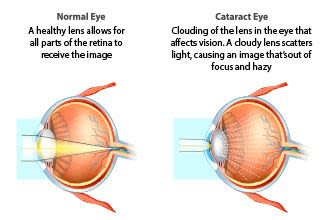
A cataract is cloudiness on or in the lens of your eye, which is normally clear. The lens is an oval-shaped object behind your pupil that helps light focus inside your eye.
Cataracts are common as people get older. Most of them develop because of normal changes inside your eyes as you get older.
Lifestyle factors like smoking or too much sun exposure may cause cataracts or speed them up.
Cataracts can also be tied to:
Other eye conditions
Family history
Diabetes and other whole-body diseases
Certain medications or treatments
READ MORE: Everything you need to know about cataracts
Similarities between cataracts and glaucoma
Glaucoma and cataracts aren't very similar, but they do have a few things in common:
They happen inside your eye
They can affect one eye or both
They're more common in older people
They can lead to vision loss if they aren't treated
Differences between cataracts and glaucoma
These two eye conditions are much more different than they are alike.
Some of their biggest differences are:
How they're treated
Right now, there's only one way to treat a cataract: cataract removal surgery. It's a safe and effective procedure that helps millions of Americans every year, but you may not need it right away.
There are many different ways to treat glaucoma. It's much more important to start treatment shortly after your diagnosis since vision loss can't be reversed.
Glaucoma is managed with one or more of these treatments:
Medication (usually eye drops)
Laser surgery
Surgery that involves an incision
Most people control their eye pressure with eye drops. This slows or prevents any more damage to the optic nerve.
Glaucoma surgery can be effective too, but an eye doctor may only recommend it if eye drops don't work well enough on their own.
Their symptoms
A cataract can cause many obvious vision symptoms, but the most common type of glaucoma can start to harm your side vision without any noticeable changes.
Cataract symptoms can often be fixed with surgery, but the vision loss from glaucoma is permanent.
Cataracts can cause symptoms like:
Nearsightedness (when distant objects look blurry)
Faded or yellowish colors
Glaucoma doesn't usually cause symptoms like these. Instead, it leads to "silent" vision loss that's hard to notice early on.
It usually affects your side (peripheral) vision first, often on the side closest to your nose.
The solution is to prevent the damage before it happens.
Without treatment, the disease can cause more peripheral vision loss and eventually blindness.
How they affect your eyes
Glaucoma is damage to your optic nerve, but most cataracts happen because protein molecules in your lens break down over time.
The lens and optic nerve are both critical parts of your eyesight. However, the optic nerve is part of your body's nervous system. It carries information from your eyes to your brain.
The lens is part of your eye anatomy. It helps light eventually reach the optic nerve, but it isn't directly connected to your brain.
Are glaucoma and cataracts connected in any way?
When glaucoma isn't caused by a separate problem, it shouldn't increase your risk of getting cataracts.
Cataracts usually don't cause glaucoma, except in very rare situations.
Some cataracts could play a part in making your eye's drainage angle more narrow. This is the spot where aqueous fluid drains in and out of your eye.
When the drainage angle gets more narrow over time, you could develop angle-closure glaucoma.
They can also be connected through their treatments:
Cataract surgery – It can make your eye pressure go up or down, and it may improve glaucoma for some people. Doctors usually recommend treating glaucoma first or at the same time, so it's under control before your cataract is removed.
Glaucoma eye drops – People with cataracts might notice that some of their symptoms get worse with certain glaucoma medications. This is usually caused by the drug making your pupil bigger or smaller for a while.
Which is worse?
For those who have access to medical care, glaucoma is generally considered to be a more urgent problem since it can permanently damage your eyesight.
Most people can fix their cataract symptoms with surgery, but treating glaucoma can be more complicated. Many people have to experiment with multiple treatment options during their lifetimes.
Fortunately, treatment can help people keep most or all of their eyesight.
Cataracts and glaucoma can be equally damaging for people who don't have access to eye care.
This is why — even though the treatment is simple — cataracts are still the number one cause of vision impairment in people who don't have access to surgery.
In the United States, programs like Operation Sight , Mission Cataract USA and AGS Cares can help people on limited incomes get the eye care they need.
READ MORE: Where to get free eye exams and glasses
Macular degeneration vs. glaucoma vs. cataracts
Age-related macular degeneration (AMD) damages the central part of your vision over time.
AMD involves a tiny spot of tissue in the center of your retina, a lining of light-sensitive cells that helps you see.
The tiny spot (the macula) gives the disease its name. It gets thinner or scarred over time and may lead to vision loss.
AMD doesn't have very much in common with either condition. But it's a little more like glaucoma than cataracts:
Both affect the back of your inner eye
Both can lead to irreversible vision loss
They can't be cured, but managing them may help
There aren't many treatment options available for macular degeneration, especially compared to glaucoma.
There's only one FDA-approved treatment for the most common type, which is called dry AMD . But it's only approved for an advanced form called geographic atrophy .
A combination of vitamins and minerals called AREDS2 may slow progression in people with intermediate AMD.
Wet AMD has more available treatments, but it's also more severe. Neither type can be cured.
Like glaucoma, macular degeneration progresses differently for everyone.
When to see an eye doctor
Schedule a comprehensive eye exam if you suspect either of these conditions or haven't seen an eye doctor in a while.
Glaucoma and cataracts are both serious eye conditions, but modern medicine now helps millions of people restore or keep their vision.
However, they have to be diagnosed by an eye doctor before they can be treated.
It can be hard to notice either problem at first. Without treatment, they can have a big impact on your eyesight. Glaucoma damage can't be reversed but it can be preventable.
Make sure to schedule regular eye exams, even if your vision seems normal.
READ NEXT: How often should you get eye exams?

